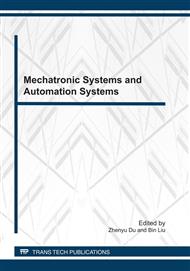p.236
p.241
p.246
p.251
p.255
p.260
p.264
p.268
p.272
The Weighting Grey Relational Analysis of the Fault Diagnosis of Frame Cross’s Fracture
Abstract:
Fault tree analysis is a fault diagnosis method that is better suited for "top-down" analysis. It can effectively evaluate cause-and-effect relationship and accident probability. In this paper, a new method of weighting grey relational analysis was applied in FTA. The principles of grey incidence analysis were introduced in detail. And the new method was used in the analysis of automobile frame cross’s fracture. The relationship between the system’s failure characters and its inside characters was found, and the hazardous events were worked out. The example results can prove that the weighting grey relational analysis of FTA is available and practicable, and the diagnosis results are reliable.
Info:
Periodical:
Pages:
255-259
Citation:
Online since:
June 2011
Authors:
Keywords:
Price:
Сopyright:
© 2011 Trans Tech Publications Ltd. All Rights Reserved
Share:
Citation:


